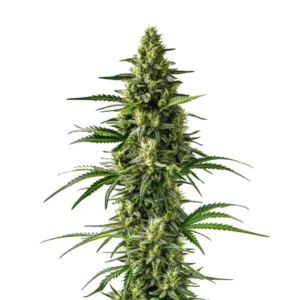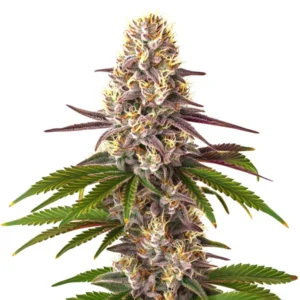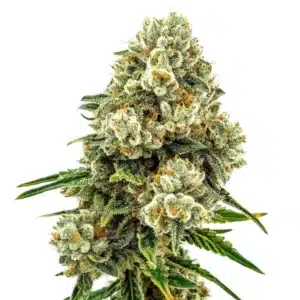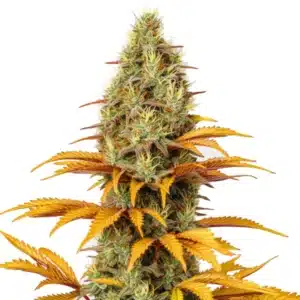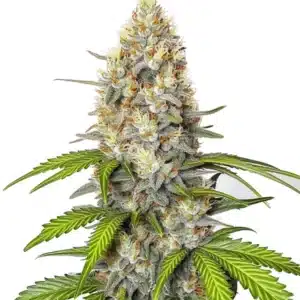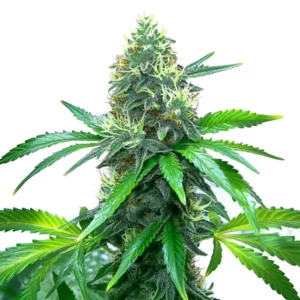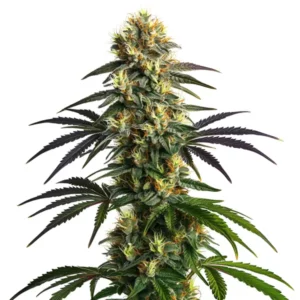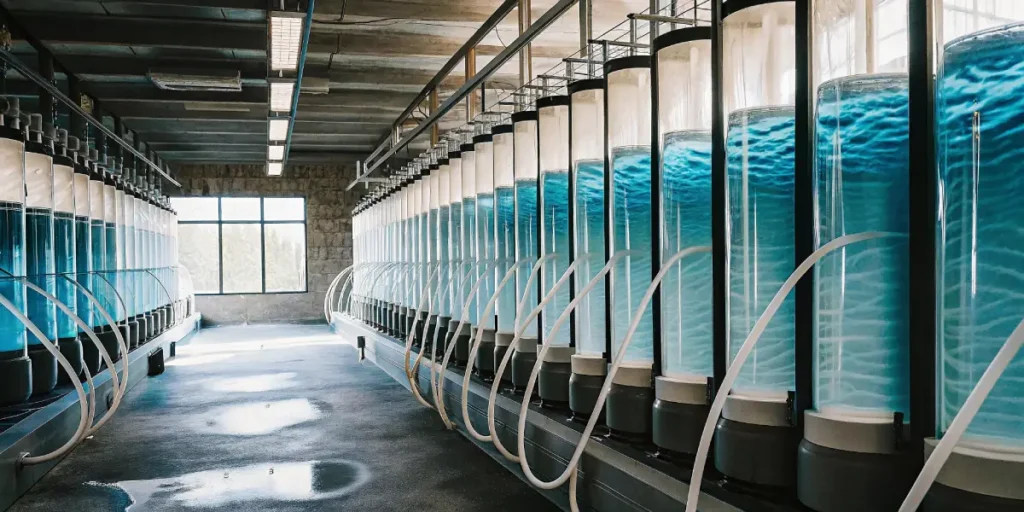
Enzyme-Based THC Production
Enzyme-based THC production is shaking up the cannabis world. It’s a groundbreaking method that uses nature’s catalysts to create THC. This approach is eco-friendly and efficient, making it a hot topic among growers and seed buyers.
Why does enzyme-based THC production matter? It offers a sustainable way to produce THC. Traditional methods often involve chemicals and solvents. Enzyme-based processes avoid these, using biological catalysts instead. This not only benefits the environment but also the quality of the final product.
Recommended Strains
Lemon Tree
|
|
THC | 18% - 23% (Medium) |
|
|
Type | Feminized |
|
|
Yield | Medium |
|
|
Phenotype | 45% Indica / 55% Sativa |
Lemon Tree x Amnesia
|
|
THC | 19% - 24% (Medium) |
|
|
Type | Feminized |
|
|
Yield | High |
|
|
Phenotype | 40% Indica / 60% Sativa |
Think about it like brewing beer. You use yeast to ferment sugars into alcohol. Similarly, enzymes convert precursor compounds into THC. This method is precise and can be adjusted to meet specific needs, making it a favorite among those who value quality and sustainability.
How Enzyme-Based THC Production Works
The enzyme-based THC biosynthesis process involves using naturally occurring enzymes to convert cannabigerolic acid (CBGA) into THC. Enzymes are proteins that speed up chemical reactions. In cannabis, specific enzymes catalyze the conversion of CBGA, the mother of all cannabinoids, into THC.
This method mirrors how cannabis plants naturally produce THC but in a controlled environment. By using these enzymes, manufacturers can produce THC without cultivating the plant. This biosynthesis is both efficient and eco-friendly, reducing the need for large-scale farming.
The enzyme-based THC biosynthesis process is an exciting development for the industry, allowing for a more controlled and predictable production environment. This control ensures that the quality of THC produced is consistent and meets the standards required by both medical and recreational markets.
Moreover, the ability to replicate the natural THC synthesis process in a lab setting opens up possibilities for innovation. By adjusting enzyme activity, scientists can explore new cannabinoid combinations, potentially leading to the discovery of novel compounds with unique therapeutic properties.
Benefits of Enzyme-Catalyzed THC Manufacturing
Enzyme-catalyzed THC manufacturing offers several advantages. Firstly, it’s a cleaner process. No harmful chemicals or solvents are needed, which means fewer impurities in the final product. This is crucial for those interested in pure and potent cannabis products.
Secondly, it’s a more sustainable enzyme THC production method. By reducing dependency on large cannabis farms, it minimizes land use and conserves water. This is a significant advantage as the world becomes more conscious of ecological footprints.
Another benefit of enzyme-catalyzed THC manufacturing is its potential for scalability. As demand for cannabis products continues to grow, this method can be scaled up efficiently without the environmental drawbacks associated with traditional cultivation.
Furthermore, enzyme-catalyzed processes can be fine-tuned to enhance the efficiency of THC production. This precision not only maximizes yield but also ensures that the final product remains consistent in quality, which is vital for maintaining consumer trust and satisfaction.
Promos & Deals
Cannabis Strains and Enzyme-Based THC Production
Using enzyme-based methods can enhance specific cannabis strains. Take “Blue Dream” from Blimburn Seeds, known for its balanced effects. By using enzymes, growers can produce high-quality THC that maintains the strain’s signature profile.
On the other hand, “Gorilla Glue 4” is famous for its potency. Enzyme-catalyzed THC manufacturing can ensure this strain’s THC levels are consistently high, providing the intense experience users expect. This consistency is crucial for both recreational and medicinal users.
Enzyme-based THC production allows for the customization of cannabinoid profiles, which is invaluable for breeding new strains. By manipulating the enzyme activity, breeders can enhance specific traits, leading to strains with tailored effects and benefits.
This biotechnological enzyme THC synthesis also supports the preservation of rare strains. By reproducing their unique cannabinoid profiles without extensive cultivation, these strains can be maintained and enjoyed by future generations of cannabis enthusiasts.
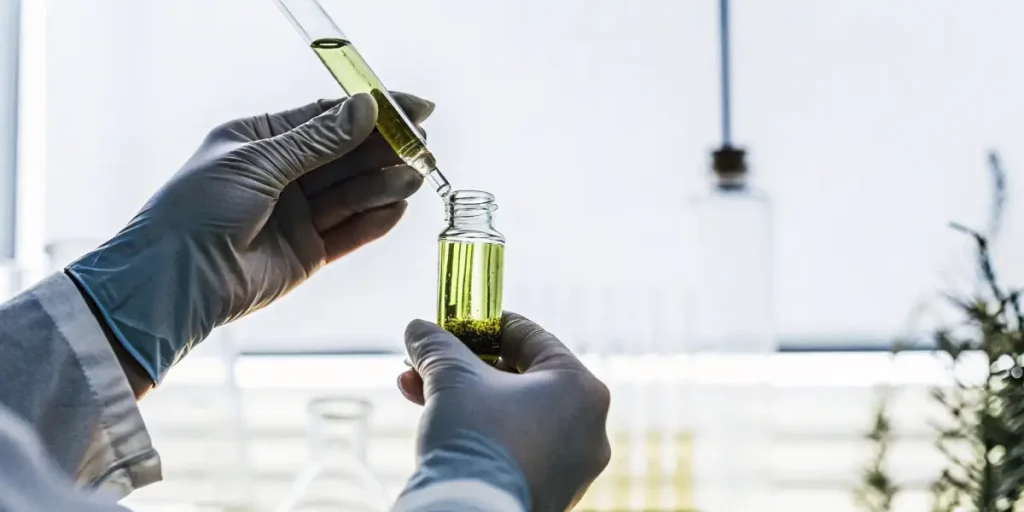
Eco-Friendly Enzyme THC Extraction Techniques
Eco-friendly enzyme THC extraction techniques are changing the game. They offer a way to extract THC with minimal environmental impact. Traditional extraction methods often use solvents that can be harmful. Enzyme techniques eliminate this need.
These techniques protect the environment and ensure a cleaner product. Consider strains like “OG Kush” from Blimburn Seeds. When extracted using enzymes, the purity and potency are enhanced, offering users a superior experience.
Eco-friendly enzyme THC extraction techniques contribute significantly to reducing the carbon footprint of the cannabis industry. By minimizing the use of energy-intensive processes, these methods align with global efforts to combat climate change.
Additionally, these techniques promote the conservation of natural resources. By using enzymes instead of traditional chemical solvents, they reduce water usage, supporting a more sustainable approach to cannabis production.
Real-Life Applications and Future Prospects
Imagine a world where cannabis cultivation is more sustainable and efficient. Enzyme-based THC production is making this a reality. It’s not just a concept; it’s already being applied in various sectors, from medical to recreational cannabis.
With biotech advancements, the future of enzyme-based THC production looks promising. As technology improves, so does the potential for more specialized and sustainable cannabis products. This is exciting for growers and consumers alike.
The integration of enzyme-based THC production in real-world applications demonstrates its viability and potential for widespread adoption. Companies are already seeing the benefits of adopting these methods in terms of cost savings and product quality.
Looking ahead, the continued research and development in this area will likely lead to even more innovative applications. From pharmaceuticals to consumer goods, the possibilities are vast, and the impact on the industry could be transformative.
Practical Applications in the Cannabis Industry
Enzyme-based THC production is already making waves. For medical cannabis producers, this method offers a way to consistently produce high-quality THC. Patients benefit from reliable products that meet their therapeutic needs.
For recreational users, enzyme-based THC biosynthesis allows for innovative products. Imagine edibles or concentrates with precise THC content. This precision is appealing to users who want to control their experience.
In the realm of cannabis research, enzyme-based THC production is opening new avenues for study. Researchers can now explore the effects of different cannabinoid ratios and develop targeted treatments for various conditions.
Moreover, the adaptability of enzyme-based methods means that the cannabis industry can quickly respond to consumer trends and regulatory changes, ensuring that products remain compliant and competitive in a fast-evolving market.
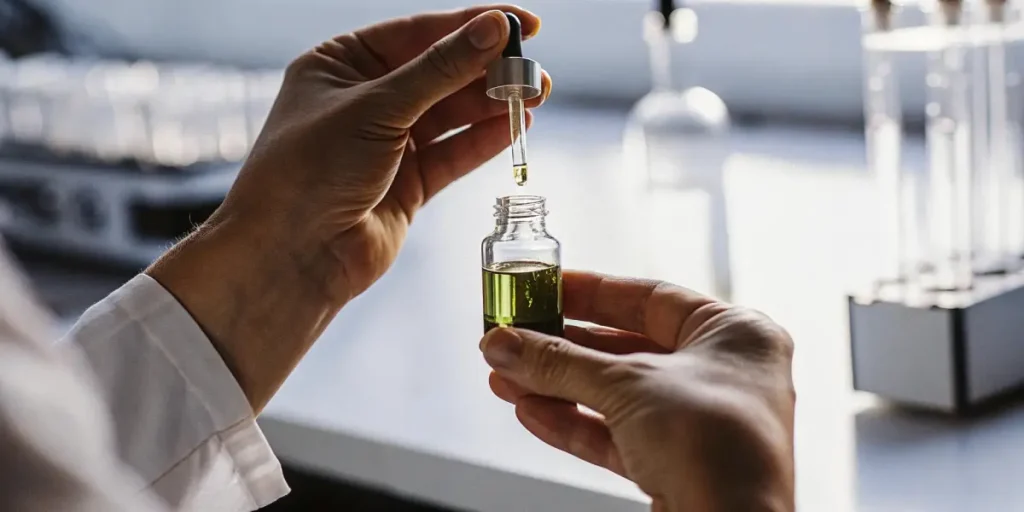
FAQs
What is enzyme-based THC production?
Enzyme-based THC production involves using natural enzymes to produce THC, the psychoactive compound in cannabis. These enzymes act as catalysts, speeding up the conversion of precursor compounds into THC, much like yeast ferments sugars into alcohol.
This method is considered more sustainable and efficient compared to traditional cultivation and extraction techniques. It minimizes the use of harmful solvents and reduces the environmental impact, offering a cleaner and greener alternative for THC production.
Enzyme-based THC production stands out for its ability to streamline the production process while maintaining high standards of quality. This approach not only meets current consumer demands but also anticipates future trends towards more eco-friendly practices.
As knowing of the enzyme-based THC biosynthesis process deepens, it is expected to play a crucial role in the next generation of cannabis products, offering solutions that are both innovative and aligned with environmental goals.
How does enzyme-based THC production differ from traditional methods?
Traditional THC production often involves growing cannabis plants and using chemical solvents to extract THC. In contrast, enzyme-based methods use biological catalysts to produce THC without cultivating the plant itself, streamlining the process.
This biotechnological approach not only reduces the need for land and water but also ensures a purer final product, free from solvent residues. It’s an innovative step towards more sustainable THC production.
Furthermore, enzyme-based THC production offers greater control over the manufacturing process, leading to more consistent products that meet specific consumer needs. This precision is particularly valuable in the medical cannabis sector.
By integrating sustainable enzyme THC production methods, the industry is moving towards practices that are not only economically viable but also environmentally responsible, setting new standards for cannabis cultivation and processing.
Are there any specific strains that benefit from enzyme-based production?
Yes, certain strains like “Blue Dream,” “Gorilla Glue 4,” and “OG Kush” from Blimburn Seeds can particularly benefit from enzyme-based production. These methods ensure consistent THC levels and enhance the strain’s natural characteristics.
By using enzymes, producers can precisely control the cannabinoid profile, resulting in a more reliable experience for consumers, whether they seek therapeutic benefits or recreational enjoyment.
Enzyme-based THC production empowers growers to maintain the integrity of classic strains while also enabling experimentation with new hybrids. This flexibility is key to meeting the diverse preferences of today’s cannabis consumers.
As more strains are developed using biotechnological enzyme THC synthesis, the market will see an influx of products tailored to specific effects and benefits, enhancing the overall consumer experience.
Is enzyme-based THC production more eco-friendly?
Absolutely, enzyme-based THC production is considered more eco-friendly. It uses natural enzymes instead of chemical solvents, reducing environmental pollution and the carbon footprint associated with traditional cannabis farming and extraction.
This method conserves water and land resources, aligning with the growing demand for sustainable and environmentally responsible cannabis production practices.
The adoption of eco-friendly enzyme THC extraction techniques reflects a broader commitment to sustainability within the industry. By prioritizing these methods, companies can engage environmentally conscious consumers and contribute positively to global ecological efforts.
Moreover, as regulations around cannabis production become stricter, enzyme-based methods offer a compliant and forward-thinking solution that meets both current standards and future directives aimed at environmental stewardship.
What are the future implications of enzyme-based THC production?
The future of enzyme-based THC production holds great promise. As biotechnology advances, we can expect more efficient and scalable production methods, allowing for specialized and tailored cannabis products that meet diverse consumer needs.
This approach also paves the way for more sustainable practices in the cannabis industry, supporting global efforts to minimize environmental impact while providing high-quality products.
In the coming years, enzyme-based THC production is likely to drive significant innovation across the cannabis sector, from developing novel therapeutic applications to enhancing the recreational user experience.
As this technology becomes more accessible, it will play a pivotal role in shaping the future landscape of the cannabis industry, influencing everything from production techniques to market dynamics and consumer expectations.


